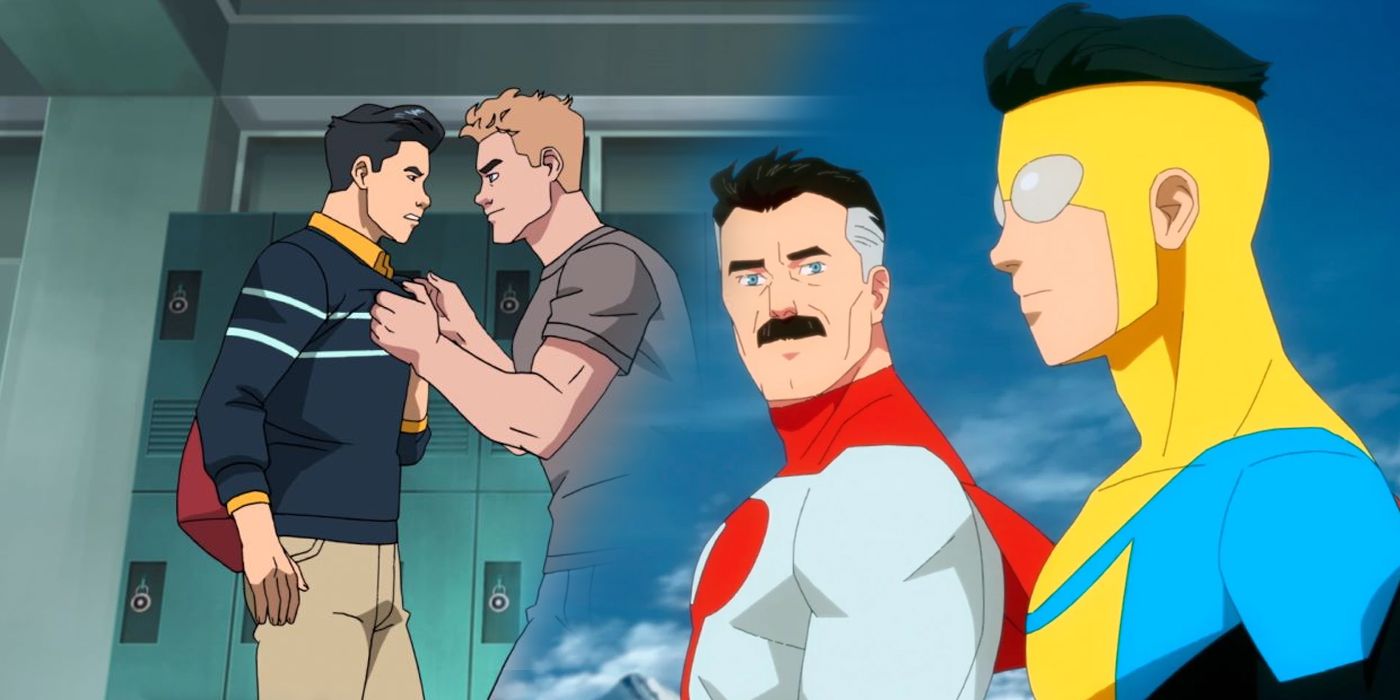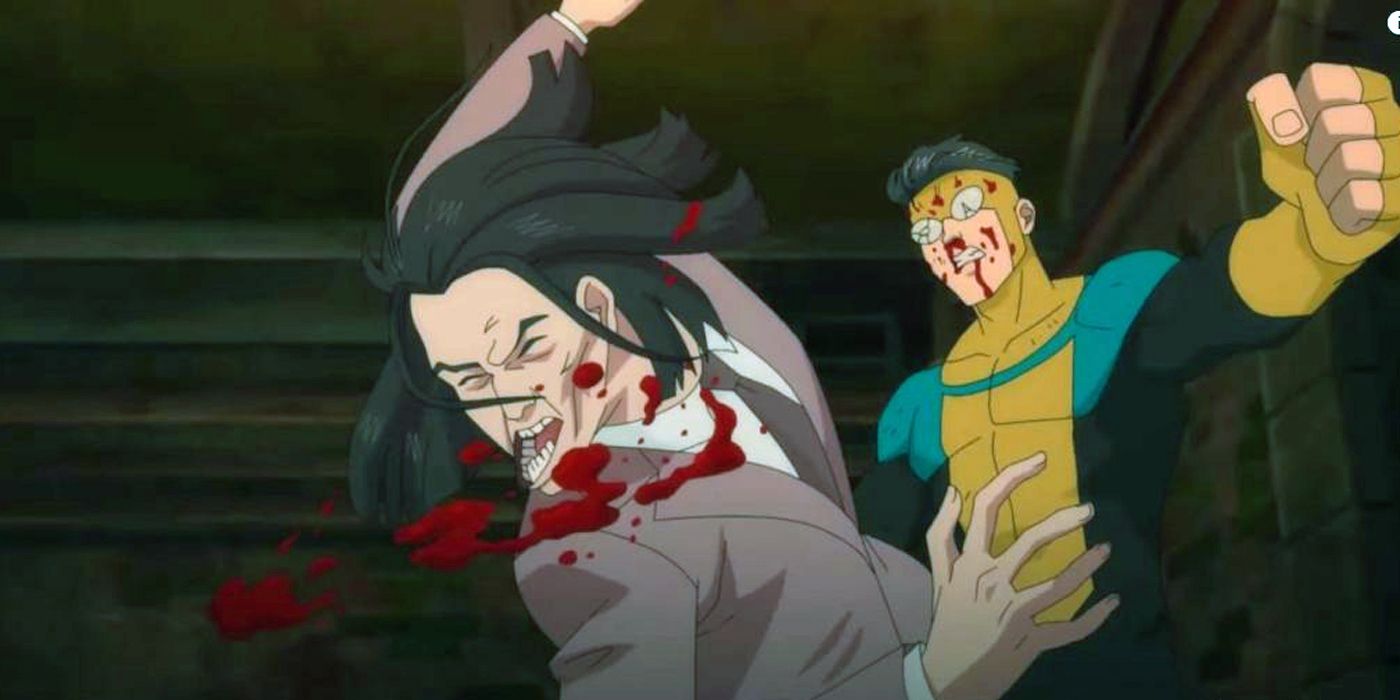The latest episode of Amazon Prime’s Invincible proves that Amazon made the right call in dropping one aspect of Mark Grayson’s powers. Over the course of the show’s debut season, the screen version of Invincible has displayed the same superpowers as the hero in the comics, including flight, damage resistance, and superhuman strength and speed. However, one of his lesser-known traits seems to have been removed from the TV series, and the most recent episode proves this change was for the better.
In Robert Kirkman’s comics, Mark is shown to be short-tempered and prone to lashing out, much like his father, Omni-Man (aka Nolan Grayson). Mark’s anger issues have often proven useful when fighting world-shaking threats, as these fits of rage push him into a “berserker” mode that amplifies his powers, similar to Goku or the Hulk. This was briefly touched on in the fifth episode of the show, “That Actually Hurt,” when Mark and Titan take on Machine Head’s team of supervillains. In the moments before the new Guardians of the Globe arrive, Mark flies into a frenzy and overpowers Tether Tyrant, Kursk and Magmaniac before Battle Beast knocks him out of the fight. Aside from this short sequence in episode 5, Mark’s “berserker” state has been largely absent from the series.
Compared to his comic-book counterpart, Mark Grayson in the Invincible show is more laid-back and not as quick to resort to violence, as evidenced by his refusal to fight back against Todd in the pilot episode. He also expresses a bit of guilt when forced to take action against non-superpowered threats. Toward the end of the sixth episode, “You Look Kinda Dead,” Mark rescues William from the secret lab of D.A. Sinclair, a mad-scientist type who’s been kidnapping college students and rebuilding them into cyborg monstrosities. Mark holds back when he strikes Sinclair, settling for breaking his jaw rather than killing him, but the remorse Mark feels in the aftermath of the fight is clear, even though Cecil Stedman assures him that he did what was necessary.
Although there’s a liberal use of graphic violence in Invincible, the series has shown that it’s more than willing to grapple with the implications of super-powered conflicts and the collateral damage that follows when enhanced individuals do battle. This was most apparent in the second episode when an alien invasion resulted in heavy civilian casualties and serious structural damage. Battles between the show’s heroes and villains are deadly serious and aren’t played up for the sake of spectacle. It makes sense that the showrunners would omit the “berserker” trait from Mark’s powers, given that this ability would lean closer to the senseless, male-aggression type of violence the show intends to avoid. Episode 6 hammers this point home with Atom Eve’s decision to use her abilities for humanitarian efforts, proving that superpowers aren’t confined to causing death and destruction.
With only eight episodes in its first season, Invincible has to be particular about the themes it chooses to highlight. The series has plenty of bloodshed without this anger-induced aspect of Mark’s abilities, so it’s fitting that Amazon would leave this trait out of the narrative and avoid glamorizing an unsavory, male-rage brand of violence. It’s a decision that ultimately benefits Mark’s characterization and adds more depth to the show’s exploration of the cost of combat between superhuman beings.


